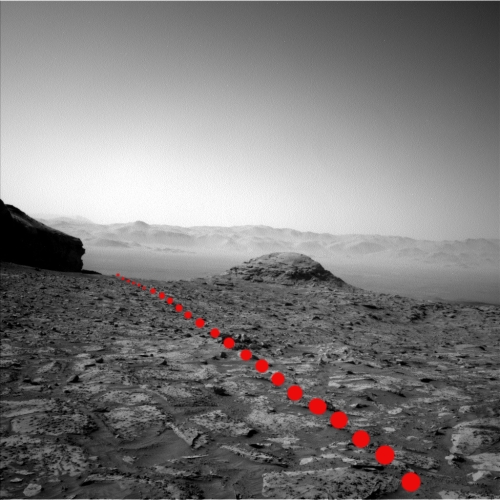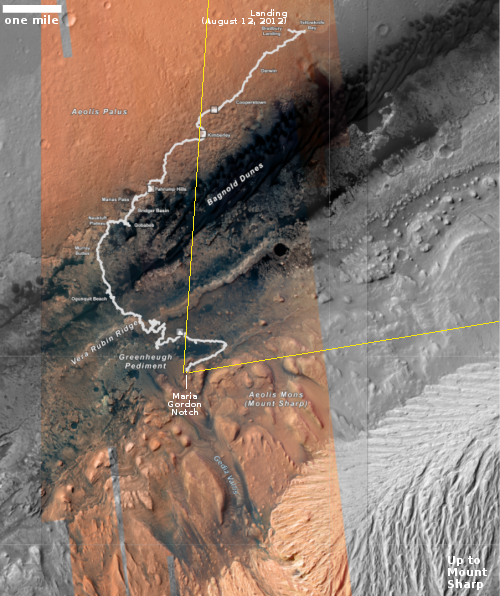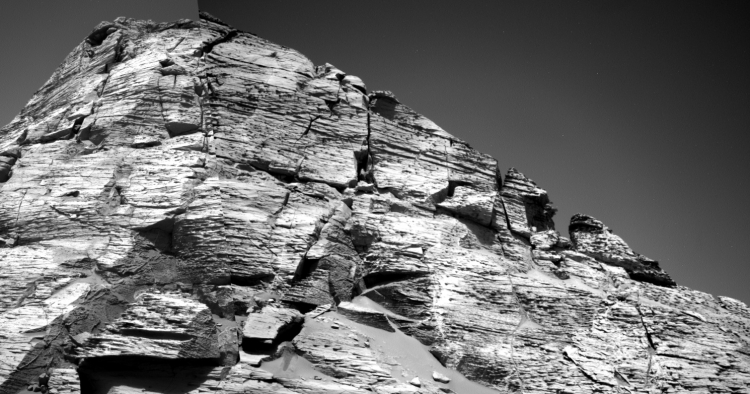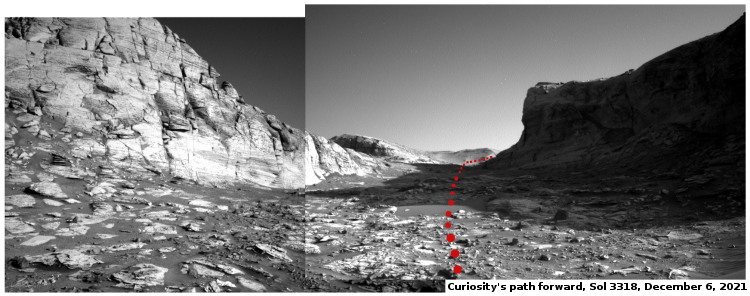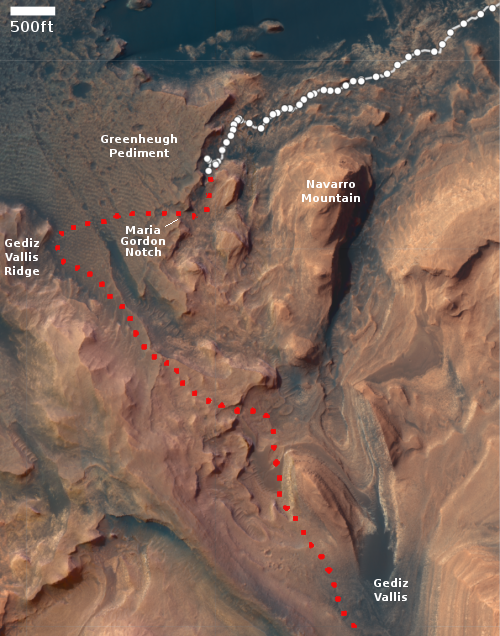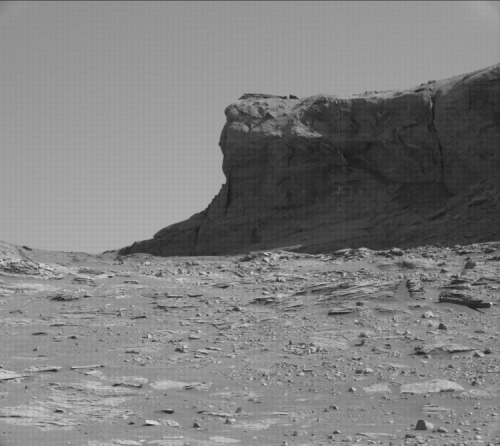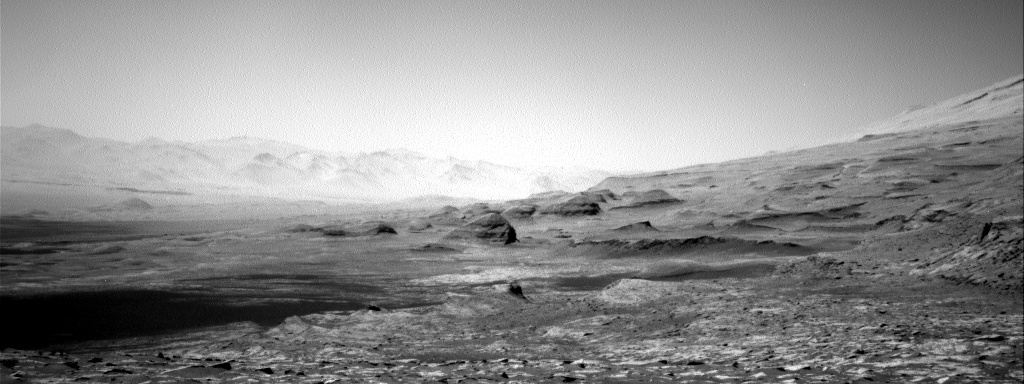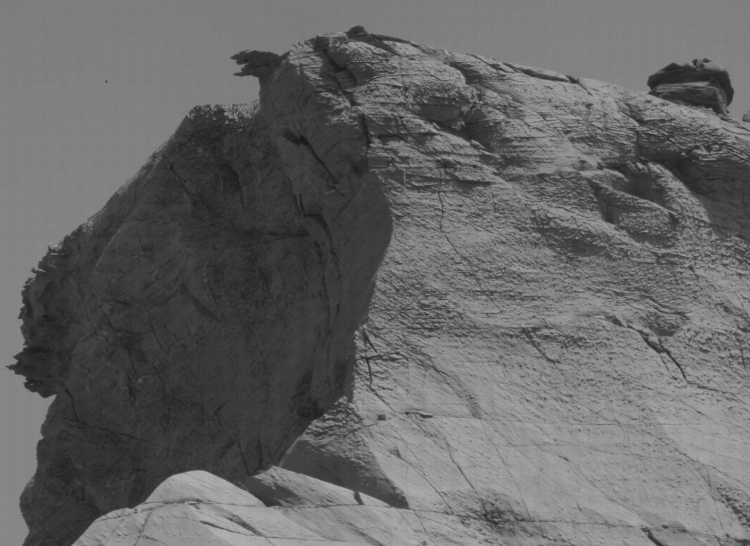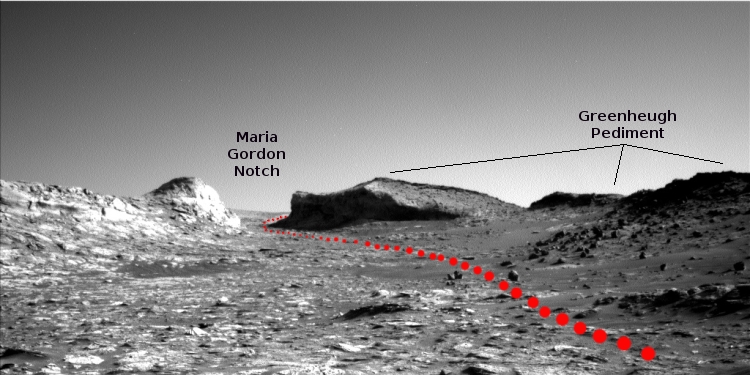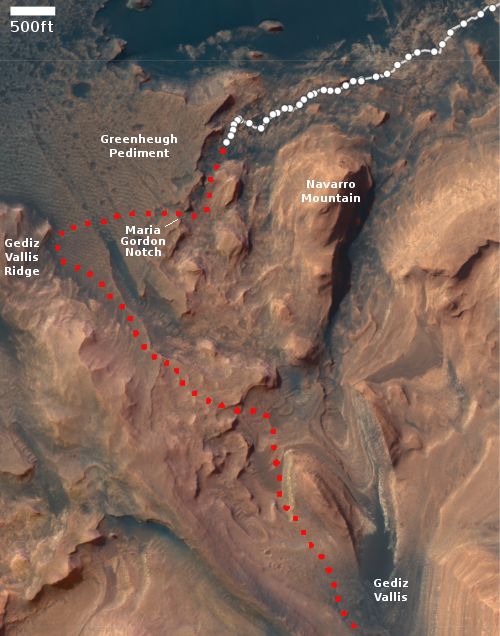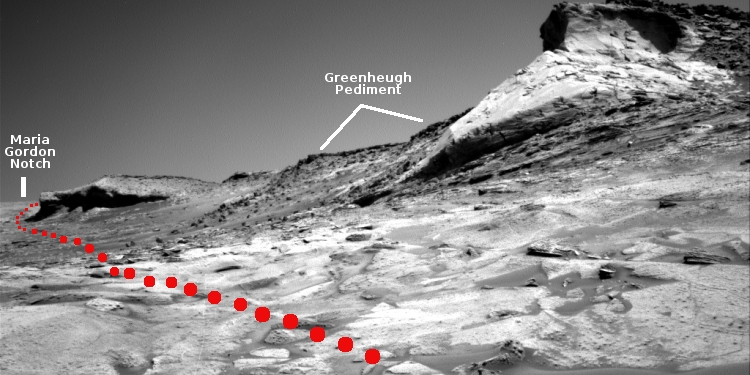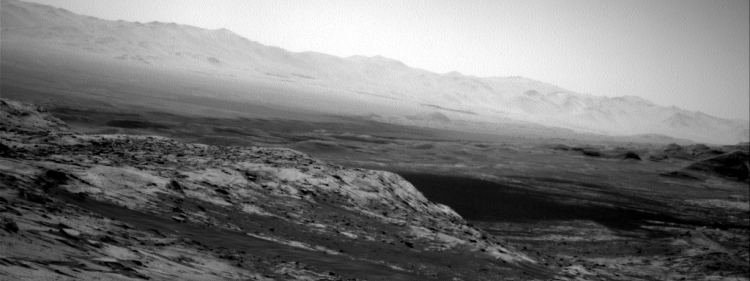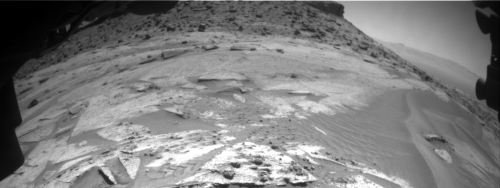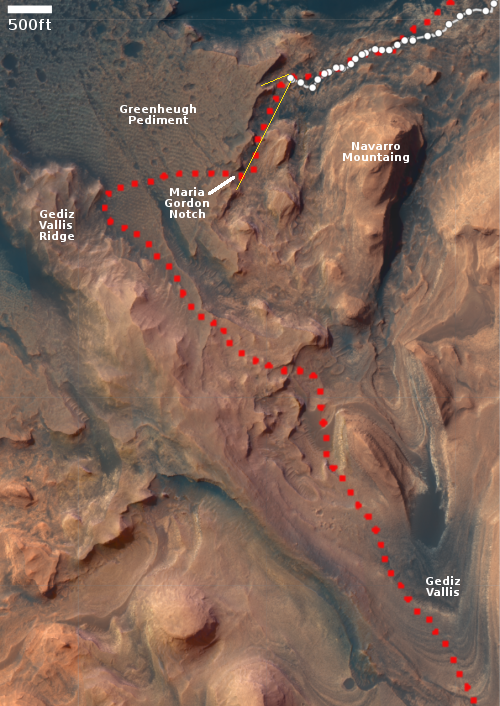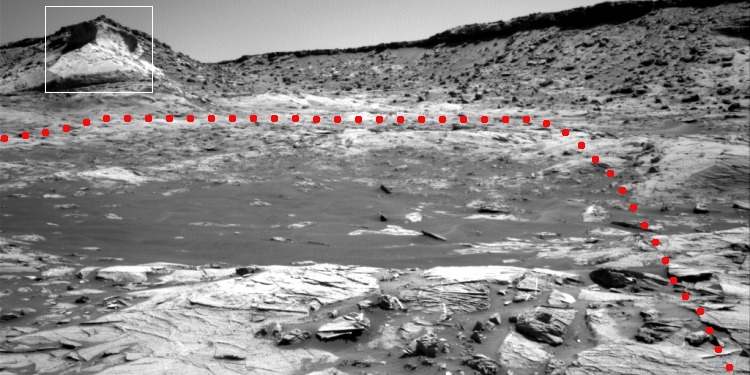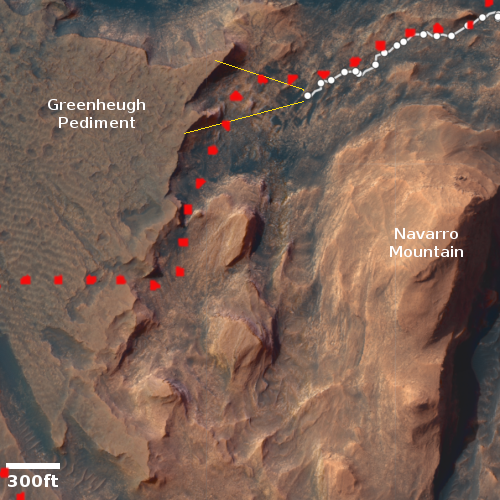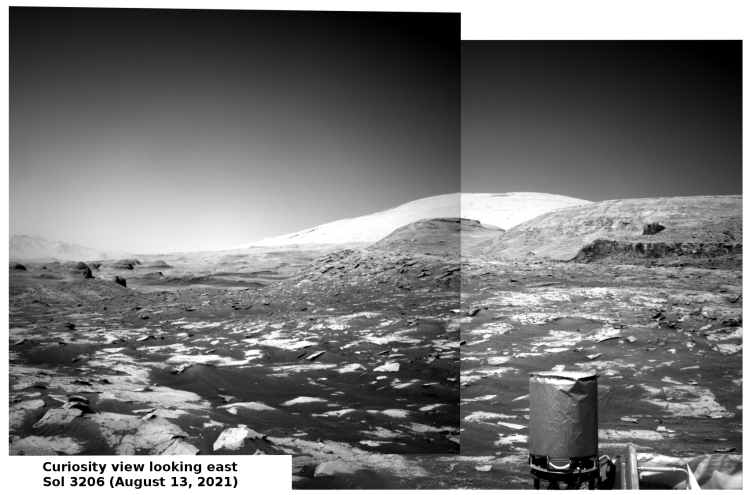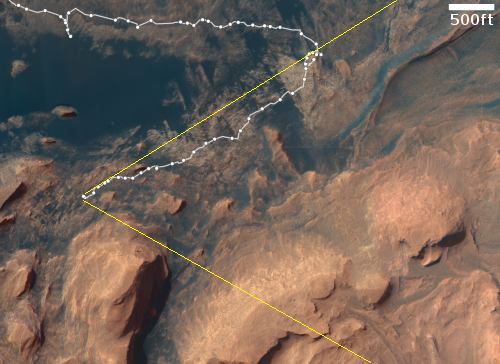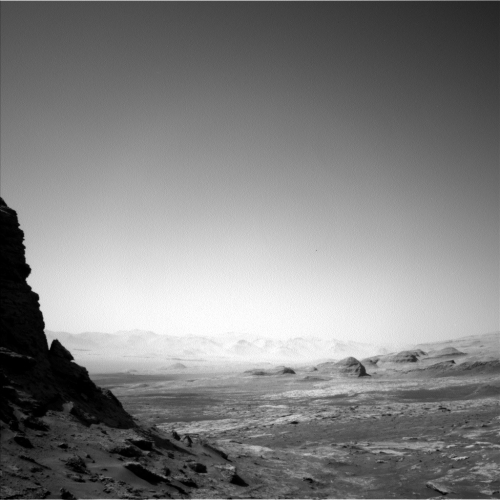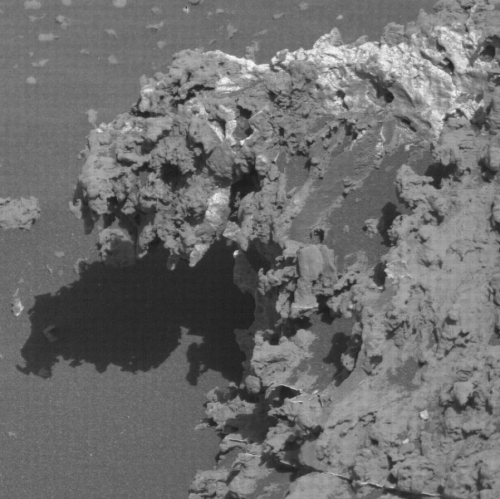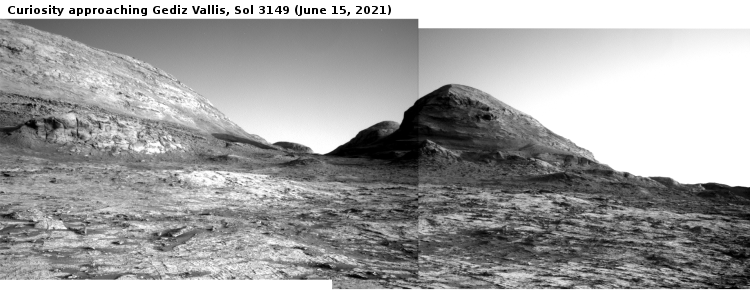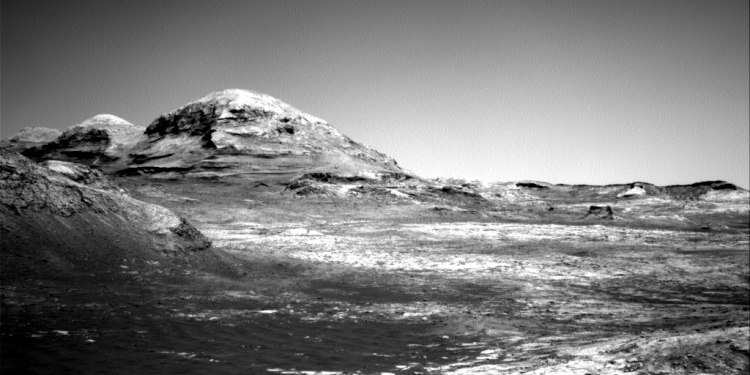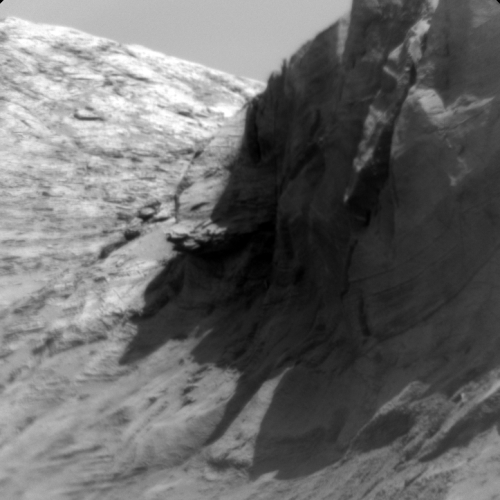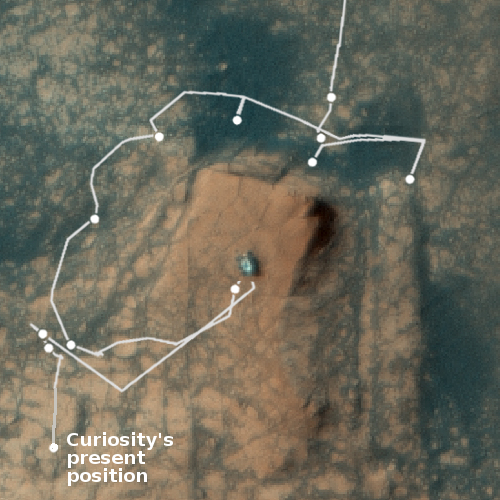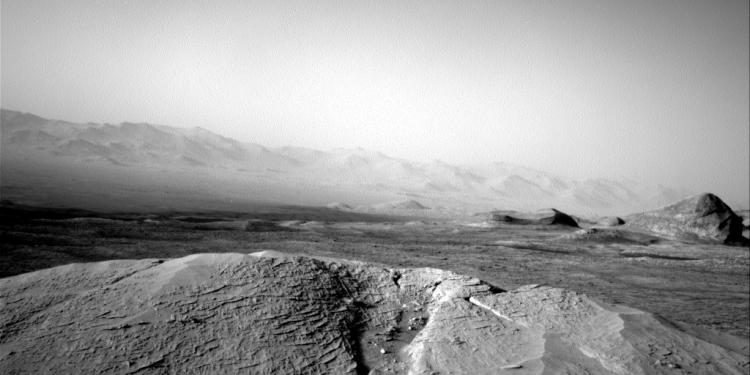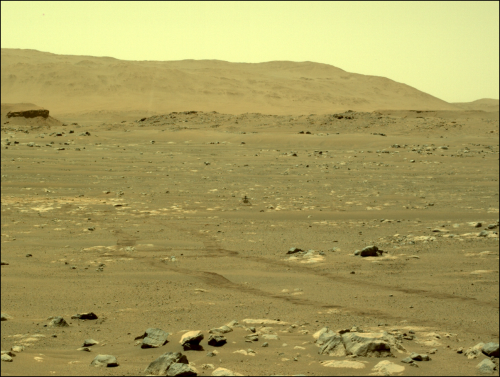Curiosity: Through the notch and looking back
The Mars rover Curiosity has now climbed up into Maria Gordon Notch. The image to the right, reduced to post here, was taken by the rover’s left navigation camera and looks back at the entrance to the notch, with the floor and rim of Gale Crater beyond. The crater floor is about 1,700 feet below and the rim is about 30 miles away.
The red dotted line indicates the path Curiosity took after entering the notch, traveling about 80 feet to the southeast. The rover will continue south inside the notch for another 800 feet or so and then turn west, climbing out of the notch and up onto the Greenheugh Pediment and continuing west until it gets to the base of Gediz Vallis Ridge, a ridge that had been in prominent view about a year ago when the rover was north of it but lower down the mountain. (See the panorama in this February 2021 post.)
Below is another picture from a day earlier, this time taken by the rover’s high resolution mast camera. I think it looks up at the top of the western cliff, but now looks at that cliff after having gone past it slightly.
» Read more
The Mars rover Curiosity has now climbed up into Maria Gordon Notch. The image to the right, reduced to post here, was taken by the rover’s left navigation camera and looks back at the entrance to the notch, with the floor and rim of Gale Crater beyond. The crater floor is about 1,700 feet below and the rim is about 30 miles away.
The red dotted line indicates the path Curiosity took after entering the notch, traveling about 80 feet to the southeast. The rover will continue south inside the notch for another 800 feet or so and then turn west, climbing out of the notch and up onto the Greenheugh Pediment and continuing west until it gets to the base of Gediz Vallis Ridge, a ridge that had been in prominent view about a year ago when the rover was north of it but lower down the mountain. (See the panorama in this February 2021 post.)
Below is another picture from a day earlier, this time taken by the rover’s high resolution mast camera. I think it looks up at the top of the western cliff, but now looks at that cliff after having gone past it slightly.
» Read more

